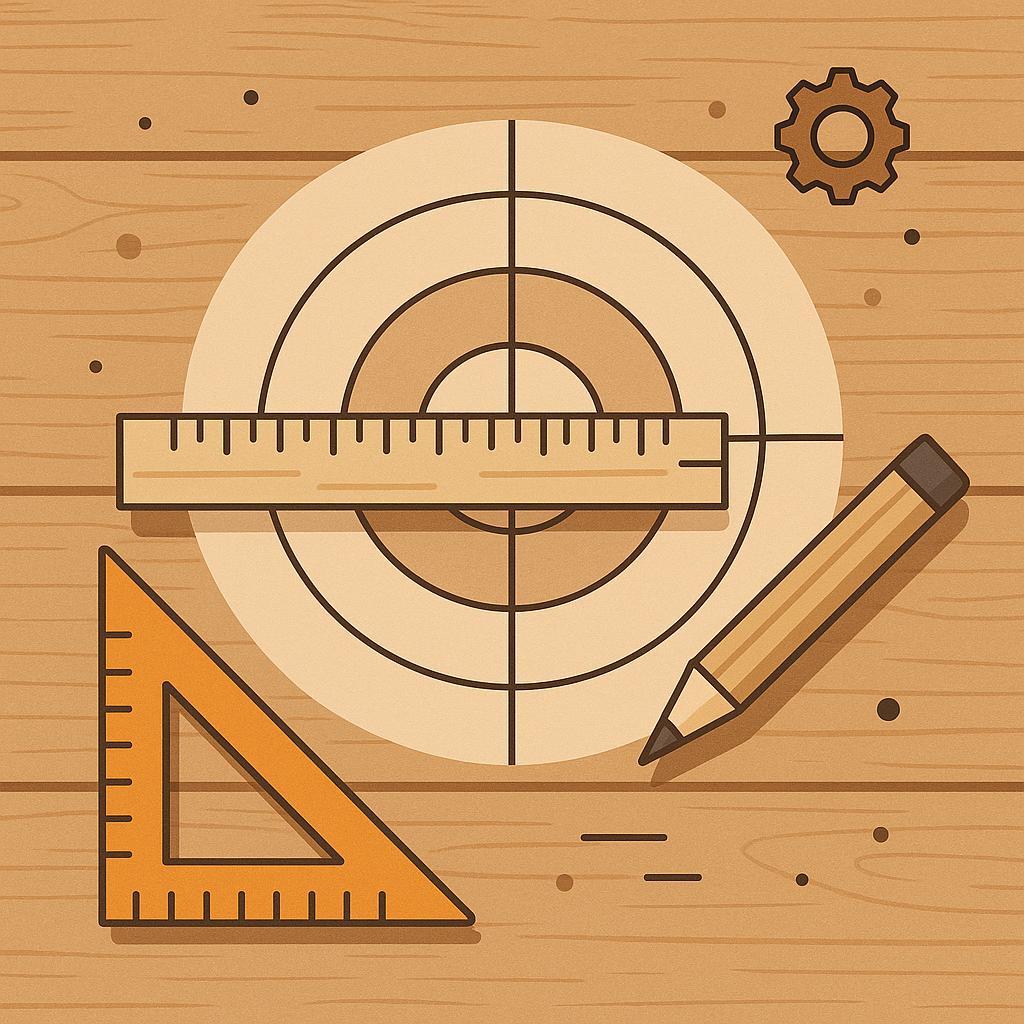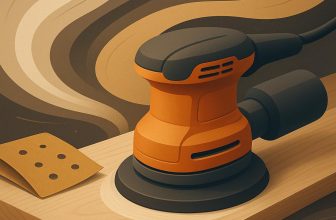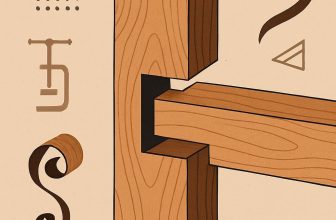
What if the difference between a perfect fit and a wasted board boils down to a single, repeatable habit you can start today? In woodworking, accuracy is the quiet force behind every clean joint and every straight line. Small errors compound fast, turning promising projects into scrap. This article shares simple tricks-quick checks, smart layouts, and dependable routines-that demystify precision. You'll learn to lay out with confidence, hold stock true, drive cuts that stay true, and verify progress as you go-so your projects fit, finish, and function better, with less waste and less guesswork.
Elevating woodworking accuracy with precise measuring and marking
Accurate measuring starts with a clean starting point. Before you touch any tool, establish a reliable reference surface and a crisp baseline line.Prepare the stock by flattening the face and squaring the edge, then use a sharp marking tool to transfer measurements with a hairline that stays put while you align clamps and check for square. A marking knife or a precise pencil leaves a crisp line thatS easy to follow and minimizes tear-out later. Take a moment to verify starting points from multiple angles; the payoff is cleaner work and fewer mismatches when you reach the final fit.
Choose the right tools for the job and use them consistently. A marking knife or a fine pencil, a marking gauge for repeat lines, and a solid combination square for right angles become part of a reliable workflow. For depth or parallel cuts, calipers can verify distances, and a tape measure keeps long spans honest. keep your gauges sharp and store them in a dedicated case so you don't lose your baseline lines. Consistency in how you lay out and mark is the quiet backbone of accuracy.
| Tool | Primary Use | Pro Tip |
|---|---|---|
| Marking knife | Creates crisp, sub-surface lines that resist smearing | Keep blade sharp; score lightly, then deepen with cut if needed |
| Marking gauge | Sets parallel lines without flexing a pencil line | Lock tight, use a test run on scrap first |
| Combination square | Checks squareness and marks right-angle lines | Calibrate against true 90° and align with the edge |
| Calipers | Verify precise distances, especially for joinery | Zero with the stock and measure at the same reference face |
Develop a simple layout routine you can repeat every session. Start by laying out from the reference edge, mark, then re-check from the opposite end to guard against stock drift. Use a centre punch or marking knife to create precise, visible start points for drill blocks or saw kerfs. Always cut on the waste side or the marked line with a small margin to accommodate blade drift, then verify fit before final assembly. A habit of double-checking measurements and test-fitting on scrap can save hours of rework and frustration.
Build Your Dream Workshop on a Budget →
Fine tuning tool setup for consistent cuts and true joints
Achieving true joints begins with a rock-solid reference. Start by confirming the tool's base is square and true: the blade must run perpendicular to the table, and the fence must be perfectly parallel to the blade. A few minutes with a square and a dial level can save hours of chasing fit later. When the reference surface is flat and the saw is dialed in, the opportunity for cumulative error drops dramatically, making every cut more predictable and every joint tighter. That repeatable accuracy starts with a purposeful setup rather than luck.
With the setup dialed in,run a controlled test cut on a scrap piece to verify dimensions and joint alignment. Use the scrap to check that each cut lands on the intended width and that miters or rebates sit flush. If you see drift, stop and revisit your alignment, blade tracking, and fence squaring.
- Align the fence to the blade using a precise square and measure the gap along several points.
- Clamp a straightedge along the cut path and perform a test run to confirm the blade tracks true.
- Use push blocks and stop blocks to ensure a consistent feed and to keep hands clear.
- Make a second test cut and compare actual results to nominal values; adjust for kerf if needed.
Keep a running log of every setup: blade height,fence alignment,kerf offset,and the results of test cuts.This living reference helps you reproduce exact cuts across sessions and stock types. As you build your library of setups, you'll notice patterns-certain blades track slightly differently, or certain fence rails require an extra shim. Use that insight to refine your routine and keep precision consistent, even when switching tools or changing stock.
| Check | What to Look For | Pass/fail |
|---|---|---|
| Blade perpendicular | edge at 90° to table | Pass/Fail |
| Fence parallel | Fence aligned to blade edge along full length | Pass/Fail |
| Table flat | no twist in bed | Pass/Fail |
| Kerf tracking | Cut remains within tolerance | Pass/Fail |
Build Your Dream Workshop on a Budget →
Smart layout methods that minimize waste and maximize fit
Smart layout starts long before the first cut. Build a practical cut-list from stock you actually own and organize parts by size and grain direction to minimize orientation mistakes. Draft your plan on scrap paper or a quick diagram, then verify fit by laying pieces on the actual boards before touching a blade. A thoughtful layout reduces waste, speeds assembly, and makes every inch count.
Think in terms of nesting. Place wide panels so they can share edges with shorter parts, letting one saw line service several pieces. Account for kerf-the blade's thickness-by subtracting it from the total length or by embedding kerf allowances into the layout so parts finish true. When working with sheet goods,align the grain and face orientation across parts to avoid mismatches and weak edges.
For quick reference, here's a compact example of a simple cut-list laid out on a sheet.
| Part | Size (in) | Kerf (in) | Notes |
|---|---|---|---|
| A | 24 x 12 | 0.125 | Top panel |
| B | 12 x 12 | 0.125 | Shelf |
| C | 6 x 6 | 0.125 | riser |
| D | 18 x 8 | 0.125 | Back panel |
Practical tips to embed in your process: mark cut-lines with a sharp pencil or chalk, use a straightedge and a push block for square edges, and run test cuts on scraps to verify fit. Build a habit of rechecking your cut-list after each setup and adjust for real-world deviations. Small adjustments here prevent larger errors later and dramatically improve accuracy over time.
Build Your Dream Workshop on a Budget →
Blade alignment and saw setup for cleaner edges
Small deviations in blade alignment are sneaky: they creep into edges with every cut. Start by confirming that the blade sits square to the table and runs parallel to the fence. With the power off, check perpendicularity using a carpenter's square pressed against the blade edge and the table surface. If you see any tilt, adjust the trunnion assembly or shims until the blade is truly vertical and the face of the blade is square to the table. Next, lock the fence in place and test for parallelism: slide a straightedge along the fence and verify it remains equidistant from the blade across the width of the cut. A tiny mismatch will amplify along long workpieces, producing uneven edges. Once these basics are right, you've laid a foundation for clean, precise cuts.
Now tune the saw setup for cleaner edges. For table saws, a zero-clearance insert helps minimize tear-out were the blade enters the wood, and set the blade height so only about 1/8 inch protrudes above the workpiece. Use a riving knife or splitter to prevent kickback and a featherboard to hold stock flat against the fence as you feed it. When you switch to a track or saw with a guide system, make sure the track is straight and clamped securely and that the blade line stays aligned with the track. On a miter saw, verify that the blade is perpendicular to the fence before crosscuts, and recalibrate if any deviation is detected. These setup details reduce wandering and give you a crisp, square edge every time.
Finish with a quick verification routine to catch drift before you cut into real stock. Do a couple of practice cuts on scrap: measure from the edge to the blade at the front and back of the cut, and note any difference. If you see inconsistency, re-check the fence, re-square the blade, and adjust until the edge is uniform along the cut. keep the table and insert clean, wipe away pitch and resin that can affect sliding stock, and service the blade-dull teeth burn and chipped teeth increase tear-out. A disciplined setup translates to faster work and edges you can trust without constant touch-ups.
Build Your Dream Workshop on a Budget →
Steady workholding and clever clamping for vibration free results
Steady workholding begins with a stable base and deliberate contact. A solid bench or fixed stand reduces vibration, while padded clamps prevent denting and creeping during cuts. Use soft materials like cork or thin rubber under jaws to spread pressure and protect the surface, and position clamps so the load resists the stock's natural twist rather than amplifying it. The goal is to hold firmly yet release cleanly when the cut finishes, never letting the piece wander mid-operation.
| Tool | Best For | Advantage | Tip |
|---|---|---|---|
| Holdfasts | Edge- or face-clamping | Fast,gentle grip; minimal surface damage | Use with a bench with proper holes |
| Vise/bench clamps | Flat stock,end grain | Strong,repeatable | Pad jaws to avoid marks |
| Featherboards | Fence work,routing,planing | Consistent pressure,hands free | Adjust tension to avoid inhibiting feed |
| Strap/cam clamps | Curves or wide pieces | uniform pressure around shape | Use soft pads to prevent marks |
Choose a smart array of clamps and fixtures. A vise with balanced jaws, a couple of quick-grip clamps, and 2-3 holdfasts give you fast, repeatable grip without over-tightening. Featherboards are a quiet, repeatable way to keep stock against a fence during planing or routing. For awkward shapes, strap clamps can form a gentle, even pressure around curves while protecting the surface; always seek two points of contact to resist movement.
Setup tips for quiet, accurate work include backing your stock with a sacrificial board to reduce tear-out and minimize chatter at contact lines, routing with a featherboard and snug fence, and supporting long boards so the middle can't bow or vibrate. before each operation, check alignment, test a light pass to confirm grip, and release gradually as you finish to prevent any lingering shift. If movement appears,add a holdfast or adjust padding to restore stability.
Build Your Dream Workshop on a Budget →
Vigilant checks and disciplined workflows to catch errors early
Adopt vigilant checks as part of every step. A quick ritual: measure twice,cut once,and give each piece a careful once-over before you lay it on the saw.verify stock length, confirm the layout lines match the plan, and double-check grain orientation. When these micro-checks become habit, small misreads are caught before they become wasted material or misaligned joints.
The following streamlined checklist keeps these checks consistent across stages.
| Stage | Focus | Checkpoint | Notes |
|---|---|---|---|
| Design/Layout | Dimensions and grain | Confirm against plan | Double-check orientation |
| Cutting Setup | blade height/angle, fence | Dry-run on scrap | Test cut helps catch drift |
| Dry-fit/Assembly | Squareness and alignment | Check gaps and joints | Use square and straight edge |
| Finishing | Flatness and surface evenness | Inspect with straight edge | Record deviations |
To lock these checks into a routine, try a few disciplined workflows that fit any shop size.
- Start-of-session audit: quick stock check, tool calibration, and layout tracing.
- Mid-session guardrails: perform a dry-fit, verify squareness, and re-mark if the plan changes.
- End-of-day wrap-up: log deviations and reset measuring tools for the next session.
- Post-project reflection: review outcomes, note recurring errors, and adjust the SOP.
Over time, these routines build confidence and reduce costly mistakes. Maintain an audit trail of deviations, and schedule a quick review after every project to sharpen future accuracy.
Build Your Dream Workshop on a Budget →
Q&A
What is the simplest way to ensure cut lines are accurate?
Mark with a sharp marking knife or fine pencil along a straightedge, and double-check with a square. Measure twice, cut once, and verify the line on a scrap piece before committing material.
How can I prevent stock from shifting during cuts?
Secure the work with clamps or a vise, and use a push block or stick to keep your fingers clear of the blade. Work on a clean, flat bench with a sacrificial board to reduce tear-out at the end grain.
Which measuring tools make the biggest difference in accuracy?
Use a reliable square,a marking gauge,and a tape measure or calipers to check both angle and length from true references. Keep tools sharp and clean, and double-check each measurement before marking or cutting.
What small habit will steadily improve accuracy over time?
Plan cuts on scrap first and employ stop blocks for repeat lengths. Then work slowly, test-fit joints, and maintain stock that is square and of even thickness.
Key Takeaways
Ultimately, the takeaway is simple: accuracy grows from consistent habits, not dramatic leaps. Measure twice, cut once; plan before you plane; check clamps, set stops, and verify with a quick test fit. The payoff is quiet precision that makes joints seamless, finishes flatter, and projects feel earned rather than improvised. For woodworkers, precision is the difference between nice effort and dependable craft-and it elevates every project, from a small box to a sturdy workbench. Try a starter project this week using one new trick, then explore additional guides or techniques. With deliberate practice, your accuracy will sharpen-and so will your confidence.







These tips are really helpful! I love how small adjustments can make such a big difference in my projects. Thanks for sharing!
I totally agree with Dylan-it’s amazing how just a few tweaks can elevate the quality of your work! Looking forward to trying out these techniques in my next project!
Great insights, everyone! I can’t wait to implement these tricks into my workflow and see how they enhance my precision in woodworking!
I’ve been struggling with accuracy lately, so I appreciate these tips! Implementing even one or two of them could really level up my woodworking game. Thank you for sharing!
I’m excited to try these tricks out! It’s incredible how small changes in technique can lead to such significant improvements in accuracy. Thanks for the great suggestions!
I’m glad to see so much enthusiasm for improving accuracy in woodworking! These techniques are often one of the best ways to refine our skills and take our projects to new heights. Can’t wait to see the results!
I love the enthusiasm in this thread! It’s so true that even small adjustments can make a big difference in our craftsmanship. I’m looking forward to seeing how these tips improve my own projects too!
I’m really inspired by this discussion! It’s amazing how fine-tuning our approach can elevate our woodworking skills. I’m excited to try out these suggestions and see the results in my next project!
These tips are exactly what I needed! It’s amazing how just a few tweaks can enhance precision in woodworking; I’m eager to incorporate them into my next project and see the difference for myself!
These insights are truly invaluable! It’s fascinating to see how slight modifications in our methods can yield significant enhancements in our work. I’m looking forward to experimenting with these tricks and sharing my outcomes!
These tips are fantastic! It’s remarkable how implementing simple strategies can drastically enhance our precision in woodworking. I can’t wait to put them into practice and improve my craft!
These tricks are a game-changer! It’s incredible how simple adjustments can lead to such improved accuracy in our woodworking projects. I’m excited to give them a try and elevate my skills!
These hacks are super helpful! It’s amazing how even small improvements can lead to more precise woodworking. I can’t wait to implement these tricks and see how they transform my work!
These tricks are so practical! I’m impressed by how small changes can lead to big improvements in accuracy; I can’t wait to try them out in my next woodworking project and notice the results!
These suggestions are really valuable! It’s inspiring to learn how straightforward tweaks can lead to enhanced woodworking precision. I’m eager to apply these techniques in my next project and witness the improvements firsthand!
Absolutely love these tips! It’s truly fascinating to see how minor adjustments can significantly elevate the precision of our projects. I’m excited to test these out and take my woodworking to the next level!
These tips are fantastic! It’s remarkable how just a few adjustments can make such a difference in accuracy. I’m looking forward to incorporating these tricks into my work and seeing the positive impact they have on my projects!
These tips are truly enlightening! It’s incredible how simple adjustments can make such a significant impact on accuracy in woodworking. I can’t wait to put some of these ideas into practice and enhance the quality of my projects!